Updated by Matthew H. Nash
Biodiversity is vital for our planet. However, over the past century the world has seen an unprecedented decline in biodiversity triggered by climate change, habitat loss, overexploitation, pollution, and pesticides. Consequently, we decided to take a deep dive look into how nations rank in terms of biodiversity around the globe in 2022. The results of our research are contained within this in-depth “Global Biodiversity Index”.
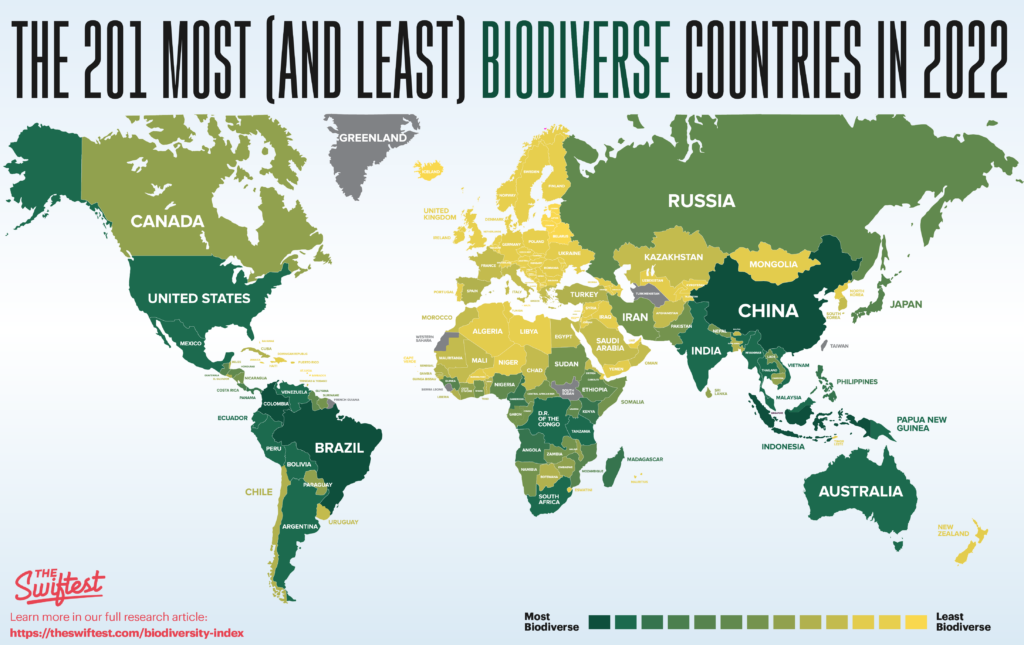
Learn more about the specific species breakdown for each country in the table below.

Get notified when we publish new research studies
Stay in the loop with our cutting-edge data analyses
Methodology
The 201 countries included in our study were selected based on available data. Unfortunately, some countries lack easy-to-find information about certain categories particularly with vascular plants. We used a mixed methods approach to our research design with the below six ranking factors to determine scores for each country that are indicative of their biodiversity.
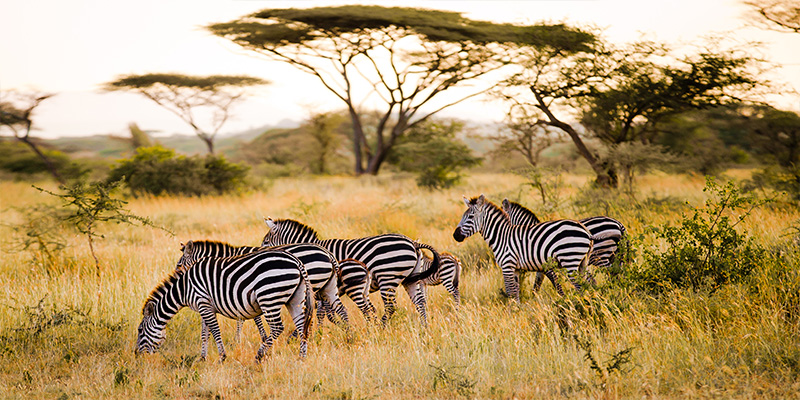
Ranking Factors
1. Total number of bird species in each country (0 to 100 points) – To find the total number of bird species in each country, we consulted the BirdLife Data Zone. Their database indicates the total number of bird species, in addition to other pertinent information, such as endangered and extinction rates.
Source: BirdLife Data Zone
2. Total number of amphibian species in each country (0-100 points) – Data for each country’s number of amphibians was collected from AmphibiaWeb. For over twenty years, AmphibiaWeb’s team has been compiling information regarding the world’s amphibians for their database. We searched by country and pulled the data for our study.
Source: AmphibiaWeb
3. Total number of fish species in each country (0-100 points) – We obtained the number of fish species per country from FishBase’s database of almost 35,000 species.
Source: FishBase
4. Total number of mammal species in each country (0-100 points) – Mammal species per country data was sourced from the website Mongabay and supplemented with additional country-level academic journals and data as needed.
Source: Animalia
5. Total number of reptile species in each country (0-100 points) – The total number of reptile species per country was obtained from The Reptile Database.
Source: The Reptile Database
6. Total number of plant species in each country (0-50 points) – This data was obtained from Mongabay and supplemented by country-specific academic journals. Because of the inconsistent data that we found, this metric was given a half-weight of only 50 possible points.
Source: Various scientific and research sources
Study limitations
While we use what we believe to be the leading databases for the various plant and animal species in our study, it would be nearly impossible to definitively say exactly how many different species exist within each country. Many countries have conflicting data reports, underreporting, or simply lack reporting when it comes to the various species. Additionally, new species are being identified yearly, and others are dying out (at alarming rates).
25 Countries With The Greatest Biodiversity
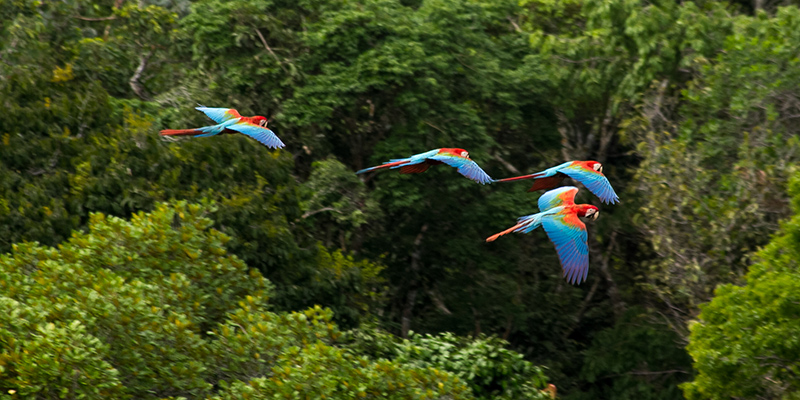
Based on our analysis, the following are the 25 countries where biodiversity is the highest along with our biodiversity scores:
- Brazil
- Indonesia
- Colombia
- China
- Mexico
- Australia
- Peru
- India
- Ecuador
- United States
- Venezuela
- Papua New Guinea
- Myanmar
- Vietnam
- Malaysia
- The Democratic Republic of the Congo
- Tanzania
- Bolivia
- South Africa
- Thailand
- Argentina
- Philippines
- Kenya
- Cameroon
- Panama
One interesting observation is that some of the most biodiverse countries are also the most populated. Additionally, many of the most biodiverse countries are sadly spending the least on conservation.
Brazil Is The Leading Country For Biodiversity
Brazil tops the list as the most biodiverse place on Earth. With 1,816 bird species, 1,141 amphibian species, 4,738 fish species, 693 mammal species, 847 reptile species, and 34,387 plant species, Brazil is one of 17 megadiverse countries. This term refers to any country that has a high number of native plant and animal species, as identified by Conservation International.
The 17 current megadiverse countries are Australia, Brazil, China, Colombia, Democratic Republic of Congo, Ecuador, India, Indonesia, Madagascar, Malaysia, Mexico, Papua New Guinea, Peru, Philippines, South Africa, United States of America, and Venezuela.
Brazil is a massive country with an incredible amount of biological diversity. At nearly 3.3 million square miles, it is the fifth-largest country by size, but ranks first in biodiversity (by a lot). In fact, it is estimated to be home to up to 20% of the world’s total biodiversity, with new native species being discovered all the time.
According to our research, Brazil has approximately 43,622 plant and wildlife species, compared to the next most biodiverse country Indonesia, which has approximately 27,662 species. This is very diverse but pales in comparison to the vastly biodiverse Brazil.
25 Countries With The Least Biodiversity
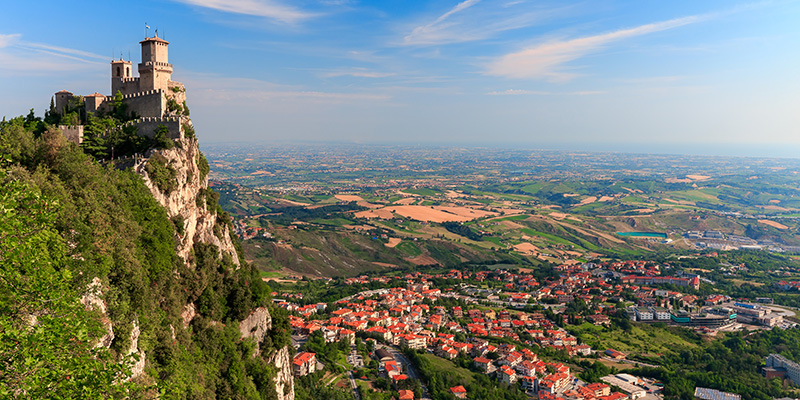
- San Marino (Pictured above)
- Nauru
- Tuvalu
- Sint Maarten (Dutch)
- Monaco
- Iceland
- Kiribati
- Andorra
- São Tomé and Príncipe
- Macao
- Luxembourg
- Liechtenstein
- Cabo Verde
- Bermuda
- Malta
- Comoros
- St. Kitts and Nevis
- St. Vincent and the Grenadines
- Antigua and Barbuda
- Grenada
- West Bank and Gaza
- Bahrain
- Turks and Caicos Islands
- Barbados
- Marshall Islands
San Marino Is The Least Biodiverse
San Marino came in last in our study of biodiversity, with only 758 total plant and wildlife species, this tiny microstate certainly lacks a wide range of plants and animals. Why is this? The lack of diversity is due in large part to its small size. San Marino is the 5th smallest country in the world at only 24 square miles. Also adding to this lack of biodiversity is the fact that San Marino is entirely landlocked and does not have any lakes or bodies of water (hence its complete lack of fish species).
Countries With The Highest Number Of Each Type Of Species
These are the top five countries with the highest number of each species included in our research.
Countries with the most bird species
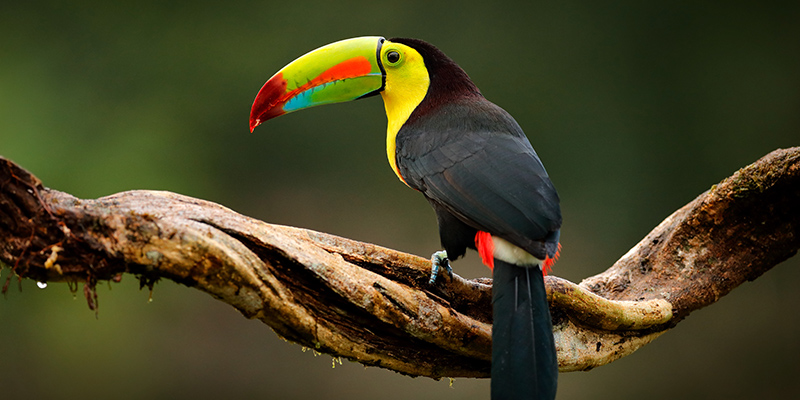
Bird watching is a popular hobby all around the world. With more than 11,000 species of birds globally, travelers enjoy finding and tracking beautiful and rare birds all over the world. For avian enthusiasts, these five countries are absolute must-sees:
1. Colombia: 1,863
2. Peru: 1,861
3. Brazil: 1,816
4. Indonesia: 1,723
5. Ecuador: 1,629
Countries with the most amphibian species
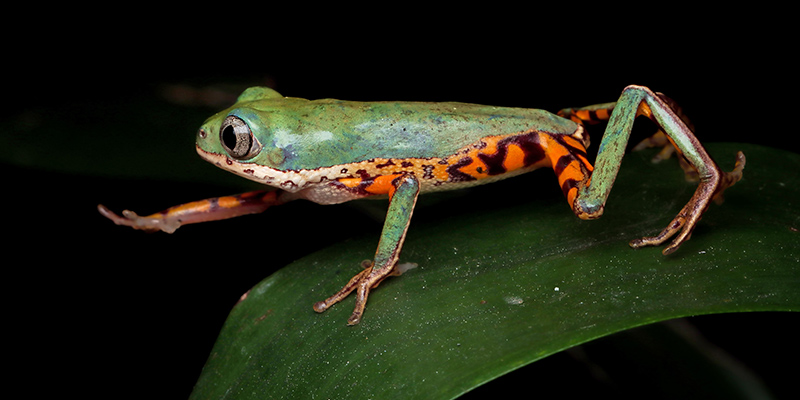
Amphibians like frogs, salamanders, and axolotls can be a lot of fun to find and watch. While they may not be as fun and exciting as birdwatching, many travelers still find amphibians fascinating. These five countries contain the highest rates of amphibian species:
1. Brazil: 1,141
2. Colombia: 812
3. Ecuador: 659
4. Peru: 655
5. China: 540
Countries with the most fish species
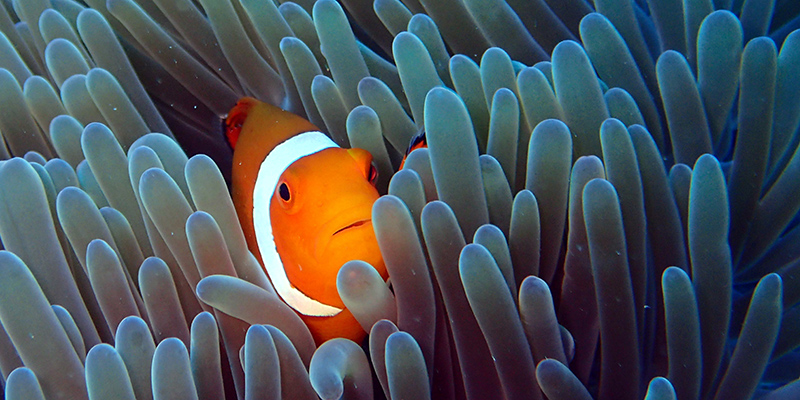
As aquariums and seafood restaurants can attest: people love fish. Whether it’s the sport of catching them or simply enjoying their beauty in the wild, many travelers seek out aquatic dwellers during their holidays. These countries contain the most fish species:
1. Australia: 4,992
2. Indonesia: 4,813
3. Brazil: 4,738
4. Japan: 4,098
5. China: 3,476
Countries with the most mammal species
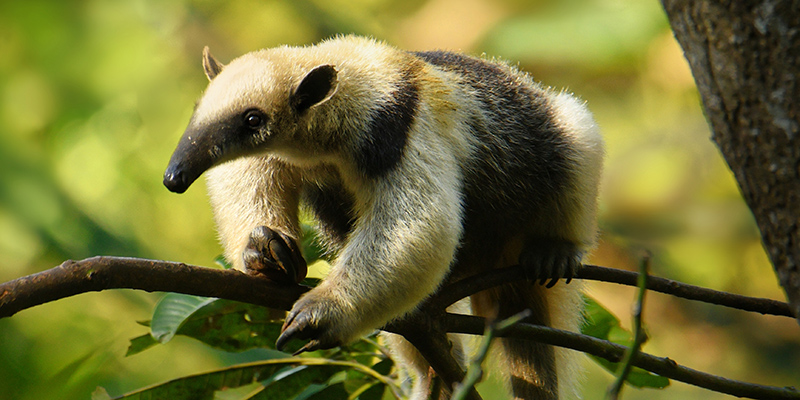
Mammals, like lions, tigers, and bears, are often a big draw for tourists. There are estimated to be over 10,000 zoos worldwide, as well as countless wildlife and safari tours dedicated to observing mammals in their natural habitats. These five countries have the most diverse species of mammals in the world:
1. Indonesia: 729
2. Brazil: 693
3. China: 622
4. Mexico: 533
5. United States: 531
Countries with the most reptile species
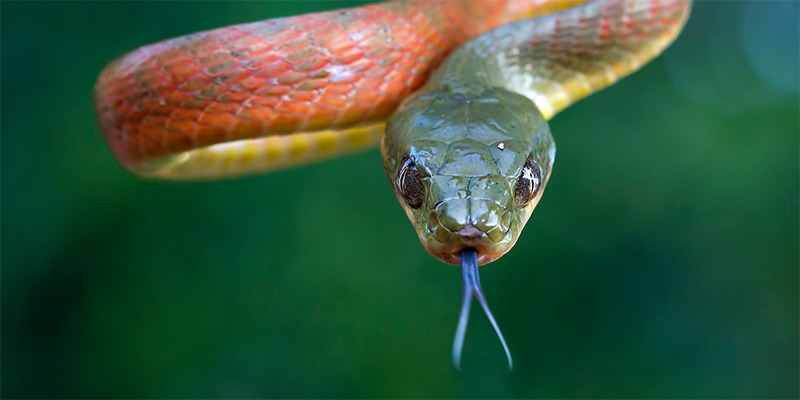
Countries like Australia are renowned for their diverse ecosystems thriving with reptile species. If crocodiles, snakes, lizards, and turtles are more your style, these five countries will be a great travel destination where you’re bound to see some interesting fauna:
1. Australia: 1,131
2. Mexico: 988
3. Brazil: 847
4. Indonesia: 773
5. India: 715
Countries with the most plant species
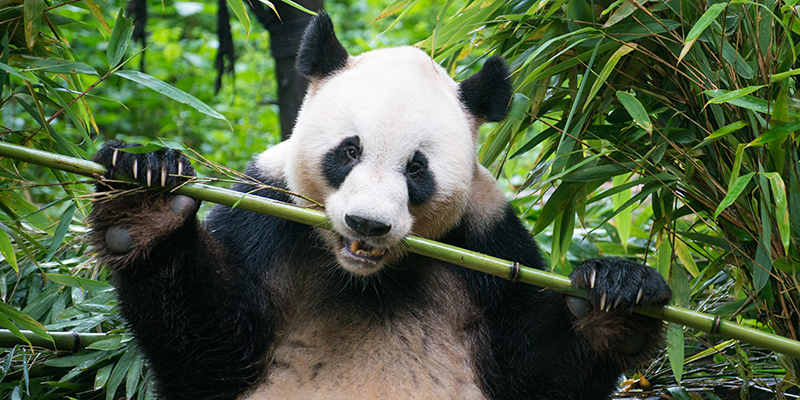
Not surprisingly, Brazil comes in the #1 spot. The Amazon rainforest has long been referred to as the “lungs of the earth” since the incredibly diverse plant species are constantly sequestering carbon and producing oxygen. Botanists and plant hobbyists will love the following countries for their wide array of diverse flora:
1. Brazil: 34,387
2. China: 31,362
3. Venezuala: 30,000
3. Colombia: 24,025
4. Mexico: 23,385
The Greatest Threats To Biodiversity

Our planet is currently experiencing a great loss of biodiversity. According to the World Wildlife Fund, the loss of species we are experiencing today is somewhere between 1,000 and 10,000 times greater than the natural extinction rate. While we don’t know exactly how many species of plants and animals are out there, a low estimate is that we could be losing 200 to 2,000 species every year, while a high estimate is between 10,000 and 100,000 species.
These are some of the biggest threats to biodiversity:
- Climate Change: Rising global temperatures can alter delicate ecosystems that are home to plants and animals. Ocean temperatures are also rising, which can have disastrous effects on marine life.
- Habitat Loss: Aside from climate change, habitat loss can also be attributed to factors like deforestation, agriculture, and natural disasters. Some natural disasters can also be attributed to climate change; in fact, the number of natural disasters has increased fivefold in the past 50 years because of it.
- Overexploitation: Harvesting or consuming species at a faster rate than the species can recover is another big threat to biodiversity. Overfishing and overhunting can eliminate species to the point of extinction. Bycatch, or non-targeted plants and animals that get caught in nets when fishing, is also a major problem. The most well-known example of bycatch is dolphins that get caught in nets when people fish for tuna.
- Pollution and pesticides: Additionally, pollution and pesticides can have a significant negative effect on plant and animal life. These toxins can easily get into the soil, air, and water ecosystems which naturally will make certain species struggle to survive.
Why is biodiversity so important?
Biodiversity offers a variety of benefits to our planet. Most importantly, plant and animal species support the ecosystems we rely on. They aid in pollination, soil fertility, food and medicine production, air quality, and much more. Losing too many species would negatively affect the balance of our world.
Research has shown that the degeneration of wildlife could lead to more disease outbreaks. As humans travel deeper into nature, we increase our risk of exposure to pathogens carried by wild animals. Many recent viral disease outbreaks can be traced back to wildlife.
Keeping our planet biodiverse can also help slow the effects of climate change. For instance, when forests are cut down at unsustainable levels, we are removing our natural defense against excessive carbon dioxide in our atmosphere.
Sources
- BirdLife Data Zone
- AmphibiaWeb
- FishBase
- Animalia
- The Reptile Database
- We used 190+ different scientific and research sources for the Vascular Plant Data. See our full list in this Google Sheet.
